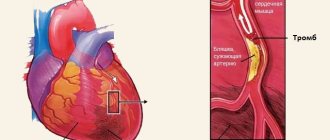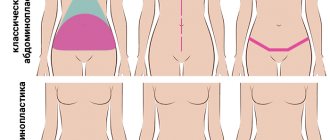The nose is the most important part of the face. Even minimal changes in the shape of the nose can completely change a person’s appearance. Therefore, rhinoplasty is one of the most common plastic surgeries in the world. As a rule, people want to make their nose more graceful, thinner, remove a hump or correct the tip - in a word, first of all we are talking about beauty. But there are people for whom rhinoplasty is truly a necessity. First of all, this applies to situations where the nose had to endure trauma.
Many patients are interested in the question: if trouble happens and the nose is broken, at what point is it better to contact a surgeon?
Our advice: it is best to contact our clinic when the injury is still relatively fresh. If you have a broken nose, it is best if you see a doctor within 10 days. During this period, it is possible to restore the original shape of your nose, since during this time the fracture has not yet had time to heal (and often it itself does not heal correctly). There can be many types of such fractures: rotation to one side, hump, flattening, etc.
Such fractures occur as a result of sports injuries - in professional wrestlers, for example. There is even such a term as “boxer nose”. In this case, it is worth soberly assessing whether you are going to continue playing sports. If not, then you should go to the clinic and get advice on restoring the shape of your nose. In this case, it does not matter too much how long ago your nose lost its original shape - a good aesthetic result can be obtained even if the intervention occurs several years after the fracture.
What will the operation give and what types of interventions are possible?
First of all, after a fracture, the nose may lose its attractive shape - our doctor will try to restore it. If the fracture is old and the bones have healed incorrectly, the operation will require a very serious and relatively traumatic one - most likely, the method of open rhinoplasty .
This method is good because it gives the surgeon greater freedom of action if some parts of the bone need to be chipped, restoring symmetry. It also allows you to qualitatively restore nasal breathing. However, there are also disadvantages: after such an operation there is more blood loss, the healing period is somewhat longer, plus there are postoperative scars (although the cosmetic suture becomes less noticeable relatively quickly).
Less serious defects - for example, a hump, asymmetry - can be corrected using closed rhinoplasty - in this case, there is no need to expose the deep structures; we will operate on your nose using special instruments, without making external incisions. Even with a closed technique, the aesthetic results can be very impressive. And besides, in this case the seams will be internal - that is, those around you will not even know that an intervention was carried out.
Besides the fact that a broken nose is unsightly, it can also be harmful to health . A fracture often leads to a deviated nasal septum and disruption of normal breathing. That is, the problem is not only aesthetic, but also purely medical. If after an injury you have any peculiarities in the functioning of the respiratory system - the effect of constant nasal congestion, snoring, etc. – after plastic surgery, you will not only enjoy the reflection in the mirror, but you will also be able to breathe normally again.
Another method that will help restore a once damaged nose is nasal tip plastic surgery .
This type of intervention is carried out, for example, if after a fracture or simply a strong blow, your cartilage was damaged and crushed, the tip of your nose was flattened, sank down, etc. Nasal tip plastic surgery can also be performed in an open or closed manner - you can determine the specific method that is suitable for your case after consultation with our surgeon. The amount of intervention here is not as large as in traditional rhinoplasty.
Factors leading to nosebleeds
In patients suffering from vascular pathologies, thrombocytopenia, hemophilia, chronic sinusitis, nosebleeds are not observed constantly, but periodically. Most often, provoking factors contribute to this phenomenon. How to cause nosebleeds with these diseases? Usually the symptom is preceded by changes in the environment, for example cold, changes in atmospheric pressure (when climbing mountains), strong wind. In addition to climatic conditions, cigarette smoke, strong odors, and some medications can be a provoking factor.
Medicines that can cause nosebleeds include drugs that reduce clotting (Acetylsalicylic acid, Warfarin, Heparin) and anti-inflammatory drugs. The use of narcotic medications can also cause this symptom.
What are the risks of the operation?
Like any surgical intervention, rhinoplasty has a number of limitations and even direct contraindications: severe chronic diseases, blood clotting disorders, inflammatory processes in the acute phase. However, if you are therapeutically healthy, most likely you will tolerate rhinoplasty well.
It is especially worth noting those patients who are terrified of surgery, fearing that after it the result will be unpredictable. These fears are unfounded: before deciding on a specific intervention method, our doctor always analyzes the current state of affairs with the patients (carefully examines the damaged area, determines the amount of intervention required, whether there are breathing problems, etc.) and models the desired result. Thus, you can “try on” your future nose at the stage of preparation for surgery.
Mechanism of nosebleeds
More dangerous are injuries to the deep choroid plexuses of the nose, as they differ in duration and penetration into adjacent tissues and into the respiratory tract. In addition, with such bleeding, excessive blood loss is possible, leading to hemorrhagic shock and danger to human life.
The next development mechanism is associated with increased permeability of the vascular wall, due to which red blood cells freely exit the lumen. This phenomenon does not require a nasal injury. Most often it occurs with severe inflammation or disorders of the blood itself.
How is rehabilitation going?
Rhinoplasty requires a relatively long recovery: you will need to wear a special bandage for about a week, and in order for your nose to retain its new shape, special tubes and splints will support it in the first few days. This creates some discomfort, but not too significant.
Approximately a week after the intervention, postoperative swelling gradually subsides, and the first results can be assessed. However, your nose will completely heal and recover in about a month or two, and in about six months all the changed structures will be completely fixed - this will be the final result.
It is very important to follow strict rehabilitation rules at first. You can’t blow your nose too hard, or even just sharply touch your nose, otherwise all the surgeon’s efforts will be in vain and a repeat operation will be required.
Complications of nosebleeds
What are the consequences of a nosebleed? With a large volume, the most life-threatening complication is possible - hemorrhagic shock. In this condition, a person loses a lot of fluid, blood pressure decreases significantly, and all body functions suffer. If blood volume is not restored in time, shock can lead to the death of the patient. Another complication is anemia - a decrease in hemoglobin, which disrupts the delivery of oxygen to organs and tissues.
It should be remembered that bleeding is only a symptom, so it is imperative to consult a doctor and find out the cause of its occurrence.
Nosebleeds cause unpleasant associations, but most often do not pose any health hazard. Moreover, there are situations where this condition becomes a defense mechanism.
Most often this is required in the development of hypertension. After bloodletting, the pressure is usually restored. Therefore, many people are concerned with the question of how to make blood flow.
Diagnostics
Diagnosis and treatment are carried out by a traumatologist, maxillofacial surgeon, and ENT doctor.
To establish a diagnosis, a specialist carries out a number of activities:
- Inspection. External signs of a fracture are detected - pain, hematomas, deformation, bleeding, damage to the skin, crepitus of fragments upon palpation. The condition of the nasal cavity and nasal passages is assessed.
- X-ray (photo). Radiography is performed in two projections. The location and nature of the damage, the number of bone parts and the degree of their displacement are clarified.
- CT scan. It is carried out in difficult cases and allows you to assess the condition of the nasal passages, sinuses, and identify possible damage to the bones of the skull. The procedure is more informative than an x-ray, but its price is quite high.
Based on clinical and instrumental studies, a final diagnosis is made and appropriate treatment is prescribed.
How long an injury takes to heal depends on the severity of the injury.
How long does it take for a broken nose to heal?
A nasal fracture, like any other, requires competent and comprehensive treatment. However, the anatomical features of the nasal bones in case of minor injuries greatly facilitate healing. For example, due to the fact that the nasal bones are motionless and have no joints, the risk of being injured again is reduced, and good blood supply in this area provides nutrition to the tissues and stimulates their fusion. Often, with timely assistance, it takes about three months to heal a simple closed fracture, and up to six months to recover from an open fracture (in especially severe cases, long-term treatment may be required for up to a year).
It is important during the treatment process to pay attention to rehabilitation procedures, which should be carried out in parallel with the main therapy. So, there are a number of recommended activities that will help speed up recovery:
- UHF therapy. It has an anti-inflammatory effect and promotes tissue restoration.
- Treatment with infrared radiation lamps. This procedure is good for getting rid of infection, which is especially important when it comes to an open fracture.
- Electrophoresis. Electrical impulses accelerate metabolic processes in tissues, which, in turn, catalyzes the regeneration process.
Each of these procedures has its own advantages and disadvantages, and only a qualified doctor can choose the appropriate type of physiotherapy based on the requirements in each specific case.
Incorrect rehabilitation measures, as well as incorrect treatment, can cause deviations from normal recovery.
Causes of injury
A fracture can occur as a result of various injuries. Signs of a nasal fracture and treatment (basic principles) are well known to professional athletes. This type of sports injury is typical for boxers and those who engage in various types of martial arts. Often a fracture is diagnosed after an accident. This could be a work-related injury (mostly this happens when safety regulations are not followed). But most often, a fracture of the nasal bones occurs as a result of a domestic injury. This is a fall due to a seizure or in a state of intoxication, a showdown or a fight.
Results
In conclusion, it should be said that when faced with a broken nose, it is very important to act correctly and without panic. If the victim is conscious and there are no visible injuries other than swelling and bruising, apply cold to the injury site and take the person to the emergency room. If a person loses consciousness due to a blow, the first thing you need to do is bring him to his senses. To do this, you can let him inhale vapors of ammonia, or, when this is not possible, put the person so that his legs are higher than his head, and rub his earlobes.
In the case of an open fracture, which is accompanied by bleeding, it is necessary to stop the bleeding using a tight bandage (however, applying it directly to the damaged area is strictly prohibited!) and wait with the victim for the arrival of an ambulance. Remember that you should not try to set a fracture or, in general, influence the position of the bones in any way, because without understanding the internal nature of the injury, you can only harm the person more. Correctly provided first aid is the key to successful treatment in the future.
You may be interested in
A tumor after a broken arm A bandage for a broken arm Symptoms of a skull fracture How to tell if a finger is broken
The mechanism of bleeding
The nose is an organ that has an abundant blood supply.
Typically, damage occurs to the most superficial area of the mucous membrane, which is called the Kisselbach zone. This is due to the location of the vascular plexus in this area. With small impacts or damage to the mucous layer when blowing the nose, the Kisselbach area is damaged. As a rule, this type of bleeding is small and does not last long.
Lesions in the deep plexuses of the nasal vessels pose a great danger. They are of impressive size and enter the respiratory system and nearby tissues. In addition, such bleeding is fraught with severe blood loss, which can provoke hemorrhagic shock and pose a threat to human life.
The mechanism of bleeding is due to the high permeability of the vascular wall. Due to this, red blood cells leave the lumen without hindrance. Traumatic injuries to the nose are not required for this condition. It is often observed during complex inflammatory processes or changes in the structure of the blood.
There are a number of factors that can cause nosebleeds. These include the following:
- sharp fluctuations in atmospheric pressure;
- mechanical damage to the mucous membrane;
- persistent infectious or allergic inflammation in the nasal cavity;
- presence of dependence on medications;
- long-term use of non-steroidal anti-inflammatory drugs;
- dry and hot climate;
- prolonged exposure to severe frost;
- anatomical features - neoplasms, polyps, presence of defects in the septum;
- drug addiction – in particular, snorting cocaine through the nose;
- systemic blood pathologies – hemophilia, leukemia, thrombocytopenia;
- heart pathologies - they can be congenital or acquired;
- hypertensive crisis caused by increased pressure;
- liver pathologies – failure, cirrhosis;
- hormonal disorders - often observed during adolescence and pregnancy;
- mental and physical stress.











